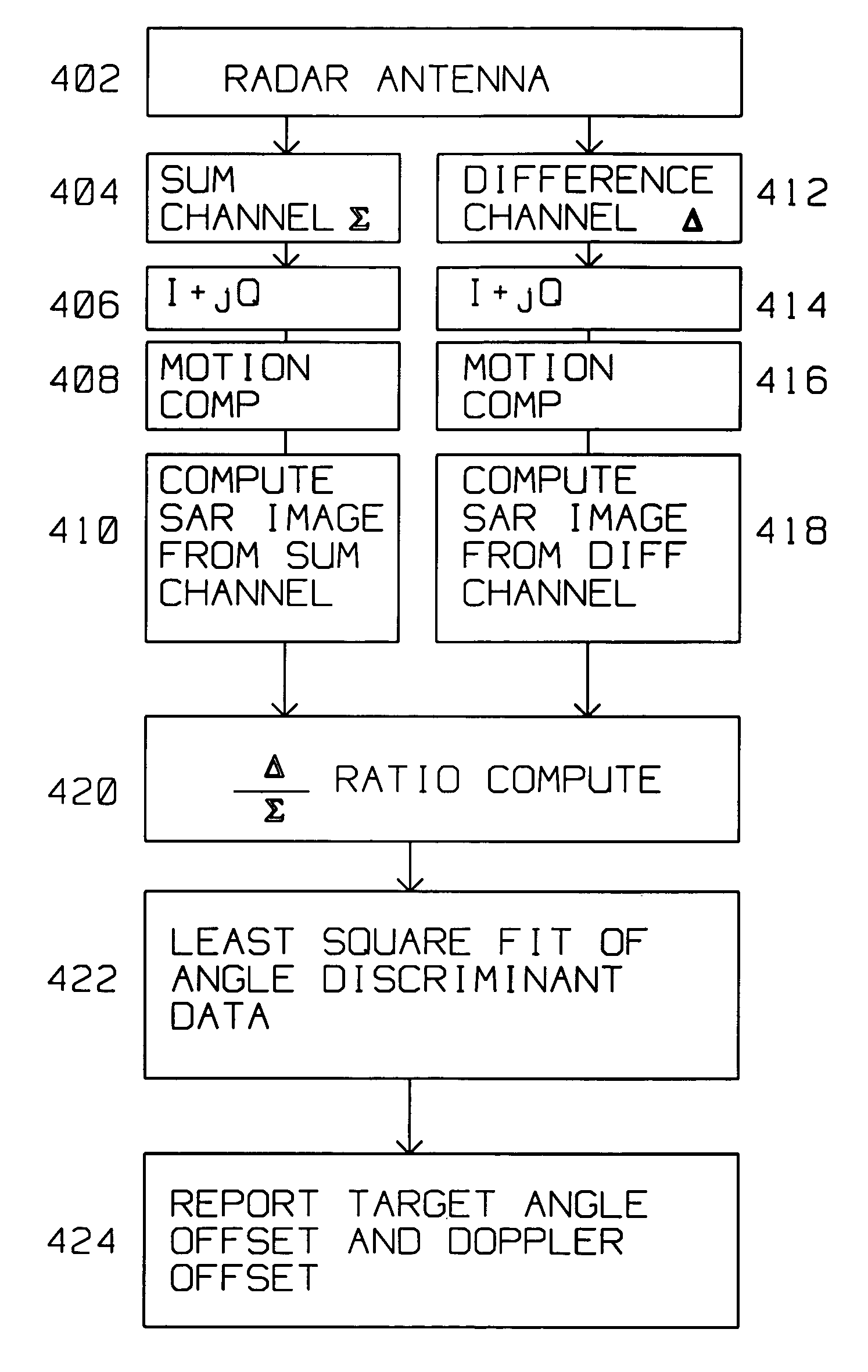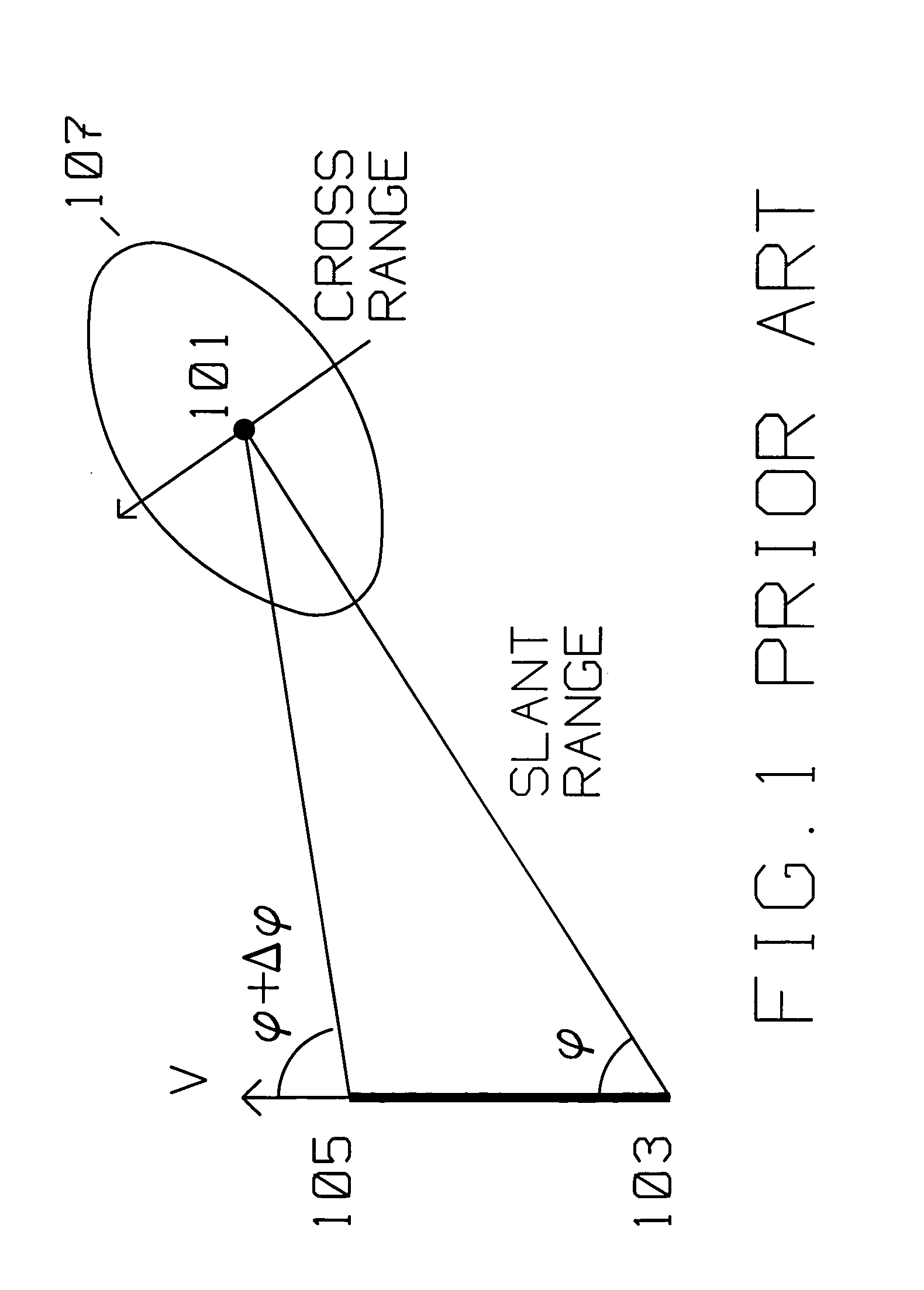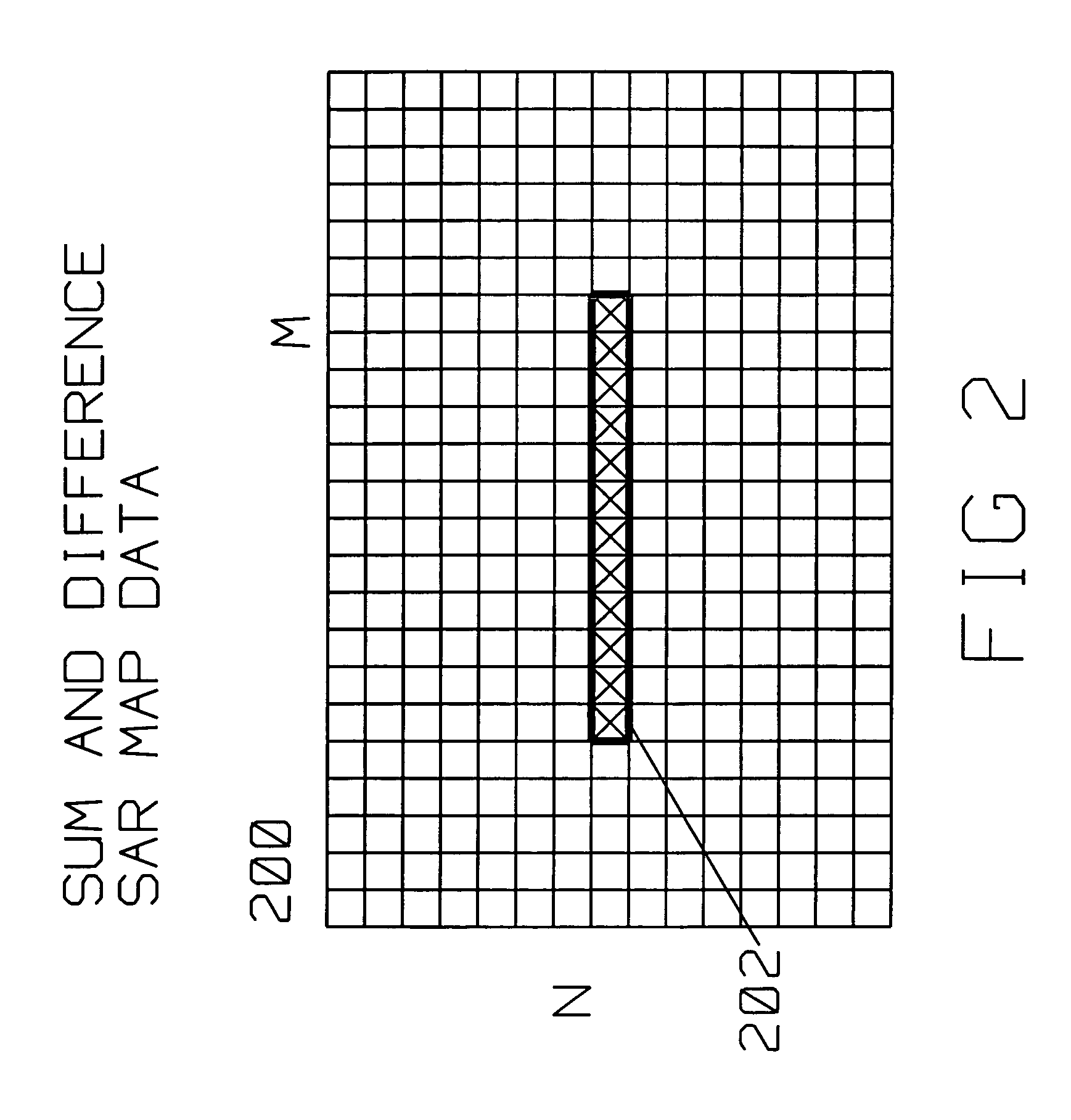Robust detection technique of fixed and moving ground targets using a common waveform
a detection technique and common waveform technology, applied in the field of fixed and moving target detection in synthetic aperture radar (sar) imaging, can solve the problem of dependence on airborne radar cost, and achieve the effect of improving the detection of moving targets in sar images
- Summary
- Abstract
- Description
- Claims
- Application Information
AI Technical Summary
Benefits of technology
Problems solved by technology
Method used
Image
Examples
Embodiment Construction
[0031]The present invention describes a robust detection technique for detecting fixed and moving ground targets using a common waveform in conjunction with the Sum Σ and Difference Δ antenna channels.
[0032]FIG. 1 shows the typical prior art geometric relationship between a moving platform carrying a radar transmitter / receiver using Synthetic Aperture (SAR) spotlight methods and target area 101 to be imaged by said radar transmitter / receiver. The moving platform is initially at position 103, travels with velocity V in the direction shown to position 105. In SAR spotlight mode, the SAR antenna is actively oriented towards scatterer 101 as the platform moves with respect to scatterer 101 with velocity V. The moving platform moves from position 103 to position 105, while adjusting the side looking angle from φ to φ+Δφ for spotlight mode so that the antenna keeps illuminating target area 101. Antenna illumination with radar energy covers area 107 during array times (frame length), and i...
PUM
 Login to View More
Login to View More Abstract
Description
Claims
Application Information
 Login to View More
Login to View More - R&D
- Intellectual Property
- Life Sciences
- Materials
- Tech Scout
- Unparalleled Data Quality
- Higher Quality Content
- 60% Fewer Hallucinations
Browse by: Latest US Patents, China's latest patents, Technical Efficacy Thesaurus, Application Domain, Technology Topic, Popular Technical Reports.
© 2025 PatSnap. All rights reserved.Legal|Privacy policy|Modern Slavery Act Transparency Statement|Sitemap|About US| Contact US: help@patsnap.com



